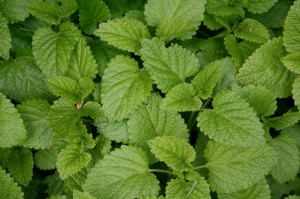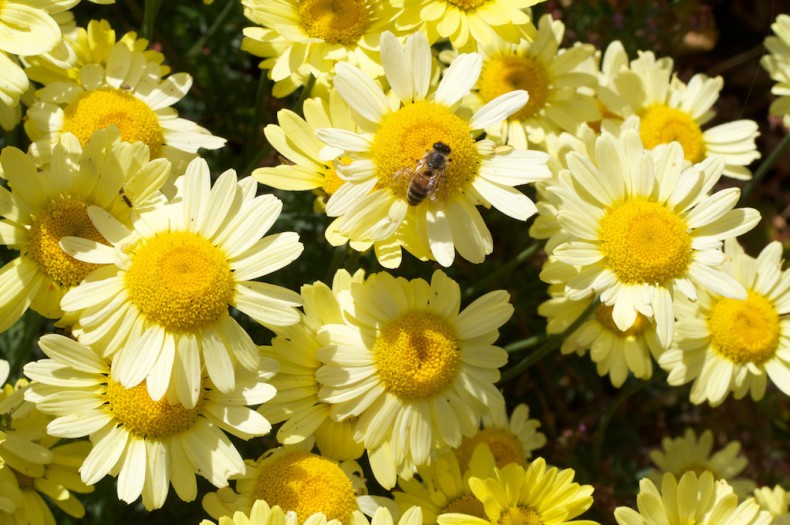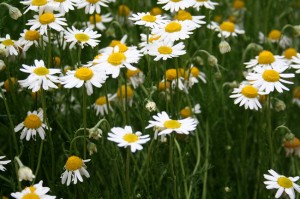
Lemon balm has a delicious sweet lemon flavour.
Tisanes or herb teas have been in vogue in southern Europe since Roman times. The fictional detective Hercule Poirot often needed a tisane after a particularly trying day. Today herb teas are increasing in popularity with the recognition of the harmful effects of too much coffee and ordinary tea. But aren’t herb teas expensive and don’t they taste awful? Not true! Especially if you grow your own, and can experiment with different combinations. Fresh or freshly dried leaves and flowers taste much better than the often musty plant material of questionable content and origin found in shops. Recent research by New York City high school students using simple DNA techniques, found that several herbal teas contain ingredients not listed on the pack. So if you grow and use your own, at least you can be certain about what you are drinking. Read more
By Penny Woodward

Dyer’s chamomile flowers
I’ve been weeding and cleaning up parts of my garden, ready for some planting and for new spring growth. Now is also a good time (maybe almost too late) to divide perennials. One I love and have been digging and dividing, is dyer’s chamomile. It’s botanical name was Anthemis tinctoria but is now Cota tinctoria. I do understand the need to update botanical names in line with new research, but it does make it really hard for gardeners and garden writers to keep up! Read more

Perennial chamomile adds calcium and ‘sweetens’ the compost.
Just as the success of a meal depends on the quality of the ingredients, so too does the success of a compost heap. If you add only kitchen scraps you’re likely to end up with a slimy, black mess and if it’s all leaves and twigs then the chances are that is what will still be there months later. The fine detail of a compost recipe varies depending on the expert you are consulting, but all compost systems require free drainage, adequate moisture and a mixture of strawy, open material and green plant tissue. The purpose of composting is to break down garden and kitchen ‘waste’ into humus that can then be added to the garden to supply nutrients in a form that can be readily used by plants. Read more



